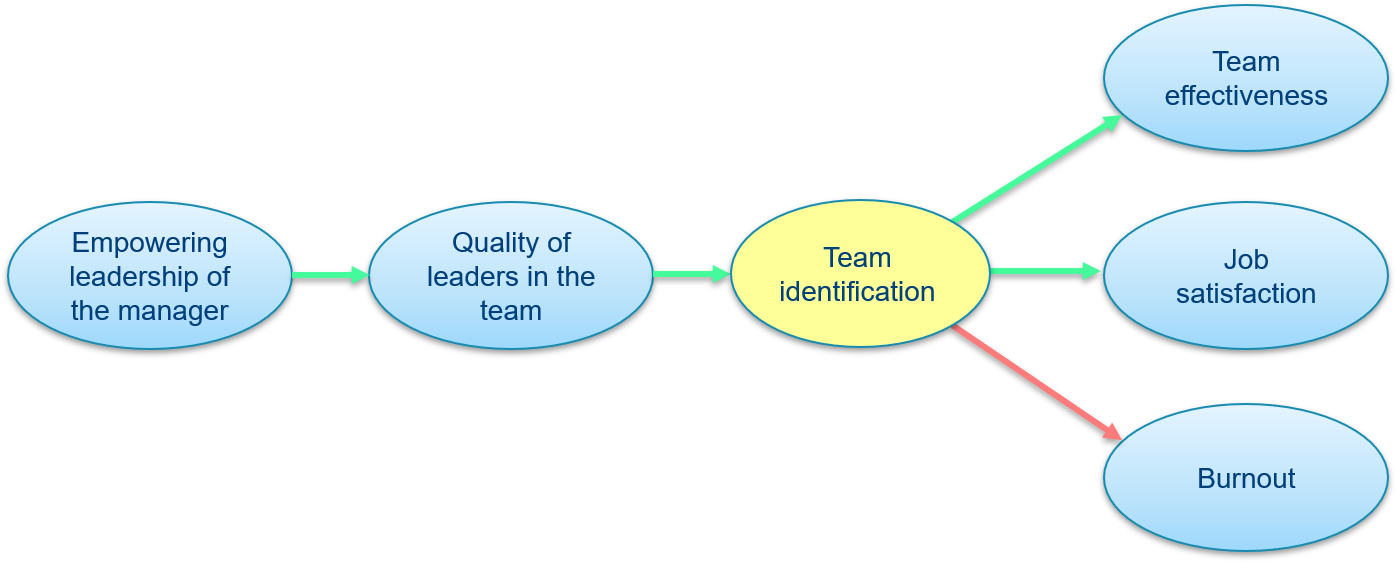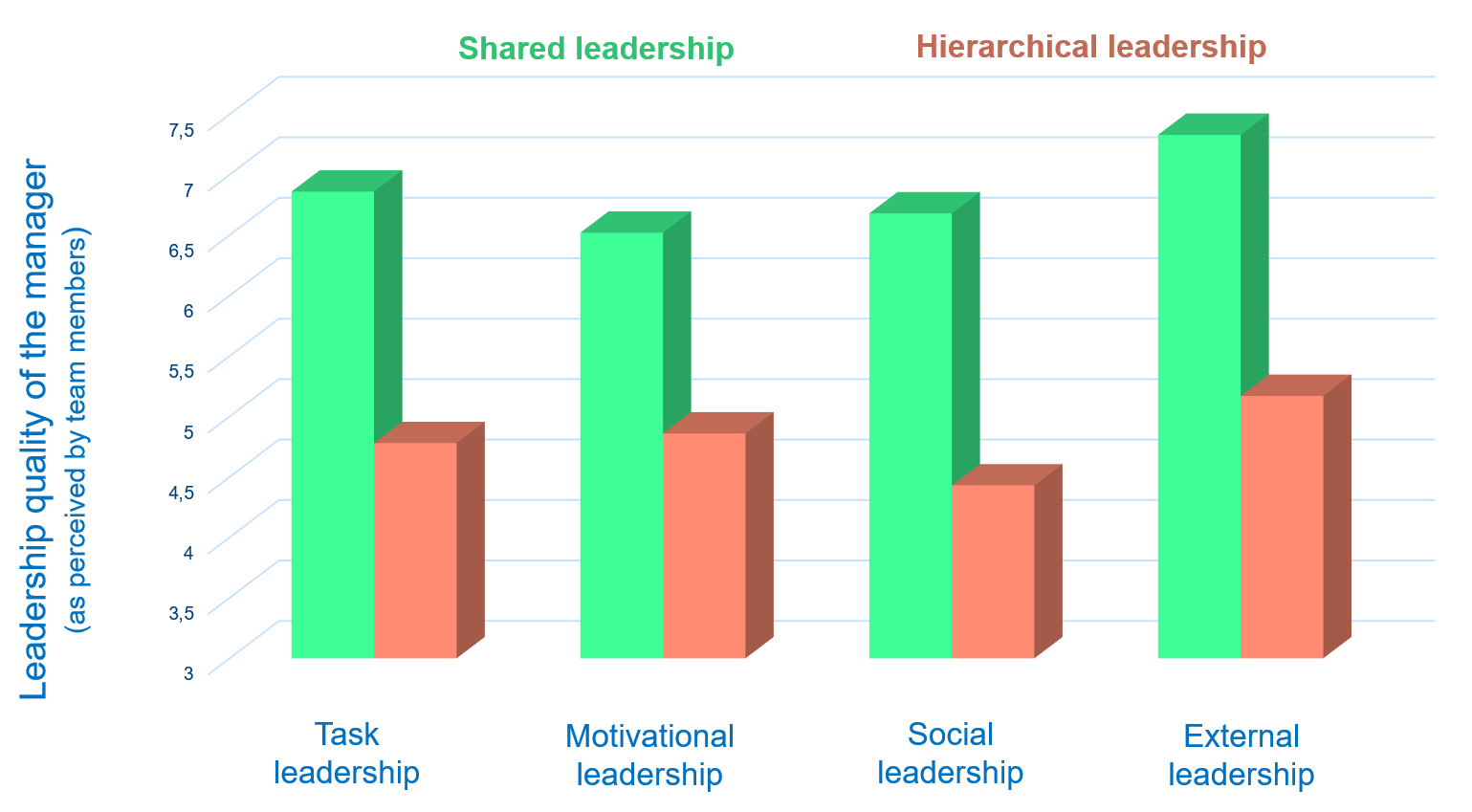Our research led to the following results:
1. The distribution of leadership talent
Our analyses indicated that in most teams (83%) the leadership talent are distributed between multiple people, instead of being concentrated in one person. In half of these teams, we found that the four roles (task, motivational, social and external leadership roles) were fulfilled by three different people in the team.

2. Benefits of shared leadership for the team
The results showed that having quality leaders within your team is closely associated with:
- Increased team effectiveness
- Improved work satisfaction
- Reduced burn-out
A key question that followed was: what characterises these successful leaders within the team? How do some leaders succeed in making their team function optimally, achieve targeted profit margins, while instilling employees’ well-being, where other leaders are confronted with disappointing numbers and burn-outs?
This study points at the ability of a leader to create a strong team identity – a feeling of ‘us’ and ‘we’ instead of ‘me’ and ‘you’– within the team. In other words, the best leaders within the team succeed in creating a shared ‘we’-feeling within their team (or: a shared team identity). As a result, team members feel more strongly connected to their team and will be more likely to act in the interest of the team, rather than for personal gain. Strengthening this shared ‘we’-feeling turned out to be the key for leaders to improve team effectiveness and work satisfaction and to reduce the risk of a burn-out.
Below, you find the entire model, in which all relationships were significant. The figure also highlights the important role for the formal leader to show empowering leadership. By encouraging team members to take initiative and become leaders themselves, the formal leader can strengthen the quality of the peer leaders, which in turn fosters the team’s effectiveness and team members’ well-being.

It is interesting to note here that these results were similar for both part-time and full-time employees, and in both small and large teams. In large teams, shared leadership seems to have an even stronger effect on these results.
3. Benefits of shared leadership for the formal leader
Shared leadership and relinquishing control may feel a bit like a leap of fate for managers. Despite the evidence that good leaders within the team are essential for team effectiveness and well-being of the team members, some formal leaders still hesitate to actually share their leadership, possibly out of fear that this might negatively impact their own leadership status.
In this study, we tested whether the fear of the formal leader was justified. As it turned out, the opposite was even true. Our results indeed showed that teams with strong peer leaders also perceive their formal leader as a better leader, both with respect to their task, motivational, social and external leadership.
The graph below shows the results in a visual manner, with in green the teams with strong peer leaders (i.e., a structure of shared leadership), and in red the teams with poor peer leaders (i.e., a more hierarchical leadership structure). The higher the graph, the more the team perceives their formal leader as a good leader. More specifically, as visualised in the graph, the better the task leaders are within the team, the better the formal manager is perceived as a task leader. Similar results were observed for motivational, social, and external leadership.

Based on these results, it is not surprising that more and more leaders want to take the step towards shared leadership. Indeed, strengthening the quality of the leaders within your team does not just improve the team functioning and members’ well-being, but apparently also the leadership status of the manager.
Are you ready for this next step? Then have a look at this page for more information about how we can support you and your team!
Interested in the results of the second research project?
Click here for more information about our second research project!
You can read the full scientific article on our first research project here:
